Most people I’ve spoken to thought trekking in Nepal with kids was a fabulous idea! I mean we weren’t planning a family two-week trek but more of a two-week adventure with some walking included. When Nepal appeared on the list, I was determined to give the boys a better insight to rural life. So, rather than doing the usual routes, we opted to go off the beaten path using family friendly treks and experience mountain life.#trekkinginnepal#mountainlife#travellingwithkids
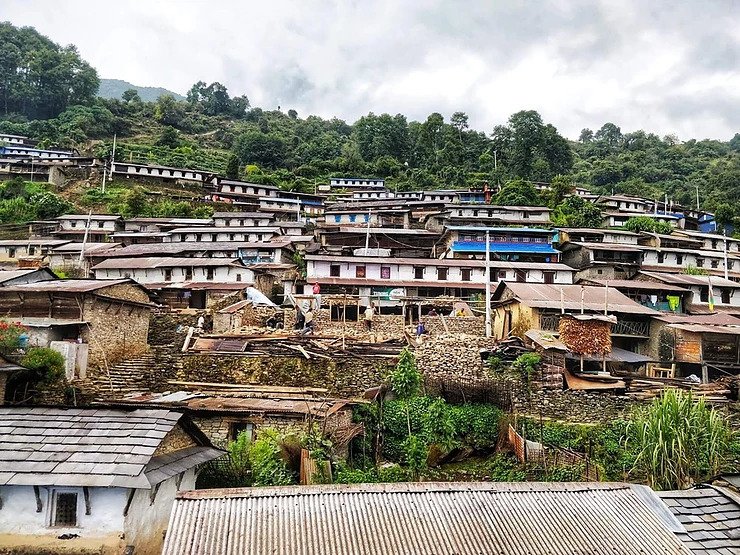
I was also aware of a local charity from the Isle of Man, which had links to Nepal, called the Pahar Trust. It was through their recommendation that we opted to visit Sikles Village. I’ll write more information on how we were able to volunteer in Sikles Village. But for now, this blog is about how we organised our trek and what we needed.
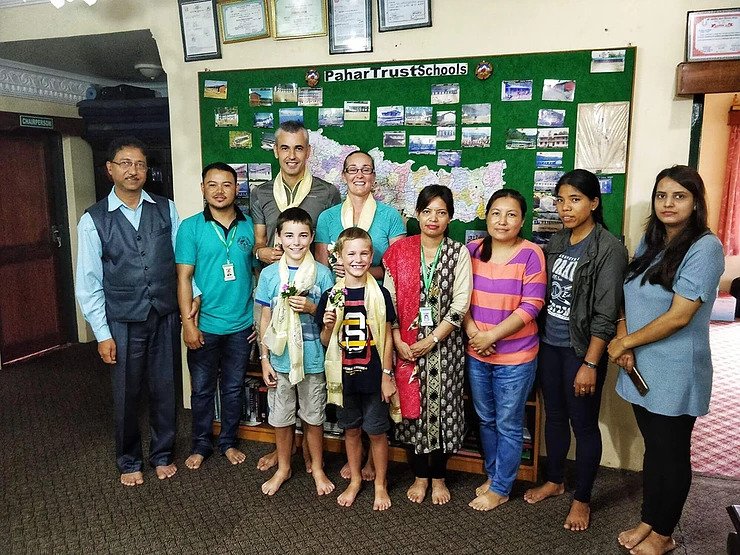
Organising the trek, guide and porters
Firstly, you need to decide on your route. The main starting point tends to be Pokhara. It’s a very relaxed town with lots of eateries and we could see why many people return here after a trek to just chill out.
From here, there are many different trekking options, depending on your abilities or requirements. The most common shorter route is Poon Hill Trek (3- 5 days), but with many tourists opting for this route, it can be a little busy. Alternatively, there is a 3-day, 2-night trek to the Dhampus village and Australian Camp. The royal trek taking in Kalikathan and Chisopani is only 3 days and 2 nights. There are so many options!
You need to decide whether you want a guide and also a porter. As we were staying for 11 days in a village, we needed to take one of our larger backpacks. So, we opted for one porter, who can carry 15kgs. The porter cost us $15 per day and the guide $20 per day. I know of another family (travelynnfamily) who trekked in Nepal with younger children and hired porters to carry the children. Anything is possible!
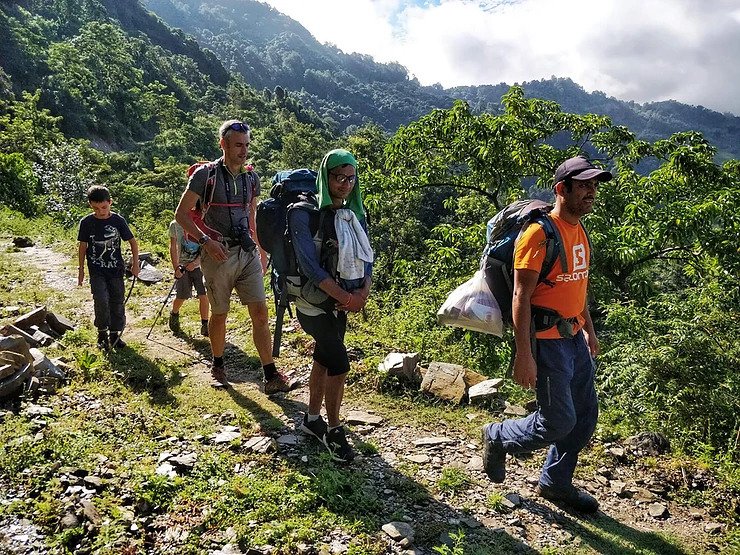
For us, we had decided to visit Sikles, and so we organised ours through the owner of our hotel (and Adams Tours and Travel) in Pokhara, Mr Adam. He was fabulous and organised everything we needed. He arranged a very knowledgeable and kind guide, Hem, and also a porter to help carry our larger bag. He also sorted out our trekking passes, some trekking poles and the jeep to drop us off and pick us up to the start and end points. It made my life a lot easier.
What to take on a trek
Think light…bearing in mind you will be carrying it! For us, we decided that the boys would not carry any bags. They had enough to do with carrying themselves.
Keith and I took our Osprey Daypacks and filled them with the more delicate items (such as electricals), but also had snacks and drinks to carry. I also had the boys’ hats, suntan lotion and medical kit.
We also had to make sure that the porter’s bag was only 15kg, so anything above this we had to carry. Keeping the weight down was more frustrating than we thought!
What we packed
Clothes for trekking were Lightweight zip-off trousers and t-shirts in the daytime. We took clothes that would dry quickly as things got pretty sweaty on the trek! Plus, we found that we always arrived late afternoon and when the sun disappears the cooler air in the mountains didn’t dry anything.
As well as the standard clothing, we also packed a few warmer clothes, such as long sleeve tops, thermals, scarf, thick socks and fleeces for the cooler evenings/mornings. We travelled in October, so the days were fairly warm.
It’s also worth having flip flops or sandals as the buildings are all concrete and so, not suitable for walking barefoot, especially for toilet or shower stops.
Bring towels and toilet roll too, as most homestays and guesthouses don’t supply these and some basic toiletries. The boys particularly enjoyed their shower from a hot bucket.
I also took a hand wash laundry to keep on top of all the sweaty clothes, as there were limited laundry facilities.
Make sure you have a medical kit (including swiss army knife) with you with essential items and don’t forget the suntan lotion. Also, we included some electrolytes in case of issues with dehydration on the trek. We didn’t see anything in the way of medical supplies and were even asked by locals if we had any medicines.
We had a couple of phones and cameras, so don’t forget your charger and adapter too!
One of best items was our watersafe filter system and water2go bottle so that we had drinkable water wherever we went. There are plenty of taps en-route, so meant we didn’t have to wait until reaching pour destination or carrying too much water. Nepal is not in short supply of water!
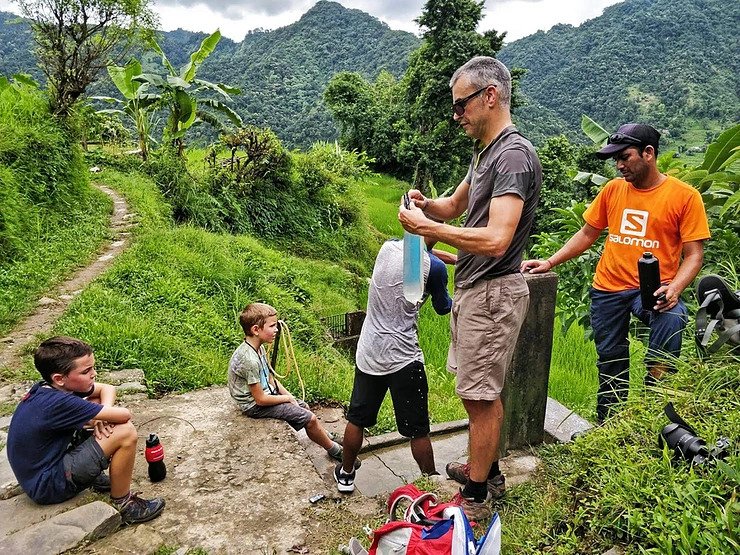
What to expect on the trek
Your guide will give you a good idea before you leave, such as climbing time, which was good as it managed the boys (and our) expectations. But if there’s one thing you can guarantee, it’s that you will be climbing up, up and up!
Just don’t rush, take things at your own pace – poly, poly or shanty, shanty (slowly, slowly).
The terrain is different on each trek, but we had a mixture of tracks, forest paths, paddy fields, suspension bridges and steps (lots of them).
It goes without saying you need to have a decent pair of walking shoes, but also a long pair of trousers as there was a bit of slipping and sliding. Plus, with plenty of leeches being attracted to our footsteps and body heat it’s beneficial to tuck your long trousers inside your socks to prevent the suckers attaching!
How did the kids cope with trekking?
AMAZING! I can’t express this any differently. They took on every challenge head-on. They showed strength, resilience and above all patience! The key aspect was keeping them involved in everything we were doing and the plan for the next day.
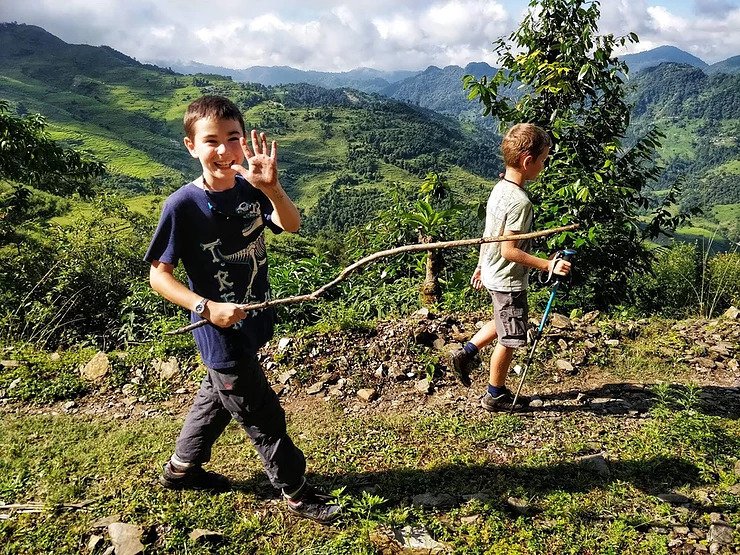
We also took lots of breaks. During those stops we had boiled sweets and biscuits, to keep them going. It’s likely you will also pass through villages on your trek where you’ll find little shops selling treats and drinks.
Oh! and sticks. As soon as they had a stick, they were happy swinging and swiping at things or using it as a walking stick. Plenty of sword games on the trip!
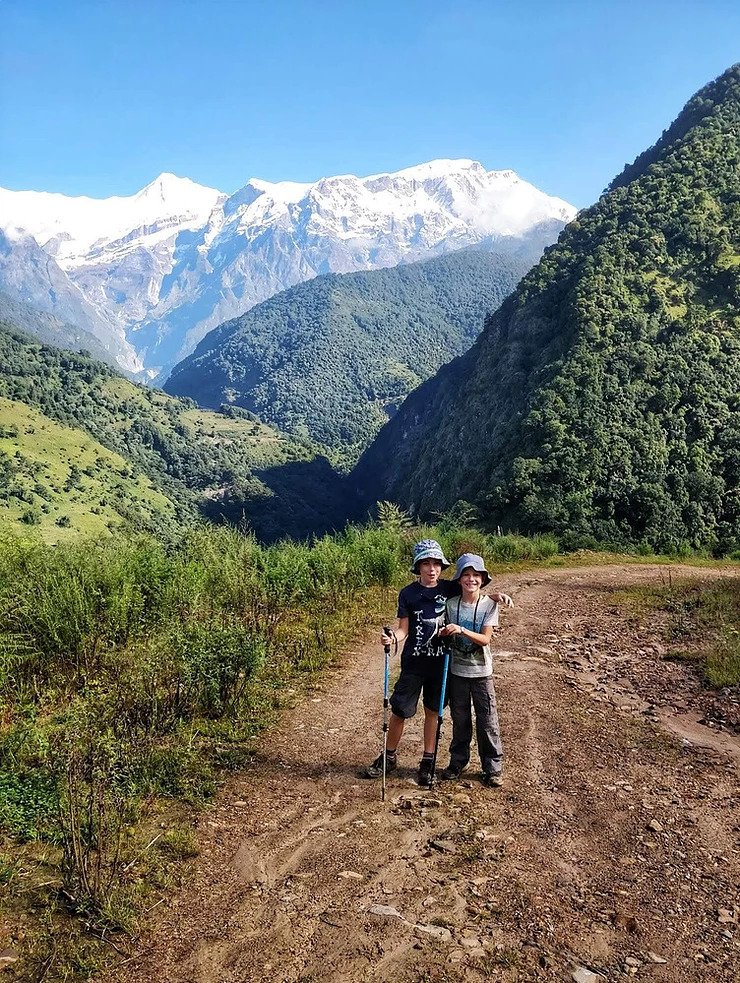
What to eat
We didn’t take that many snacks with us, only some sweets and biscuits, as we knew we could get them in the villages. And at the end of the day you have to carry them.
For breakfast we had the option of either an omelette, pancakes or occasionally were offered porridge.
When you reach the villages, the lunch options were always noodle soup or sometimes veg noodles.
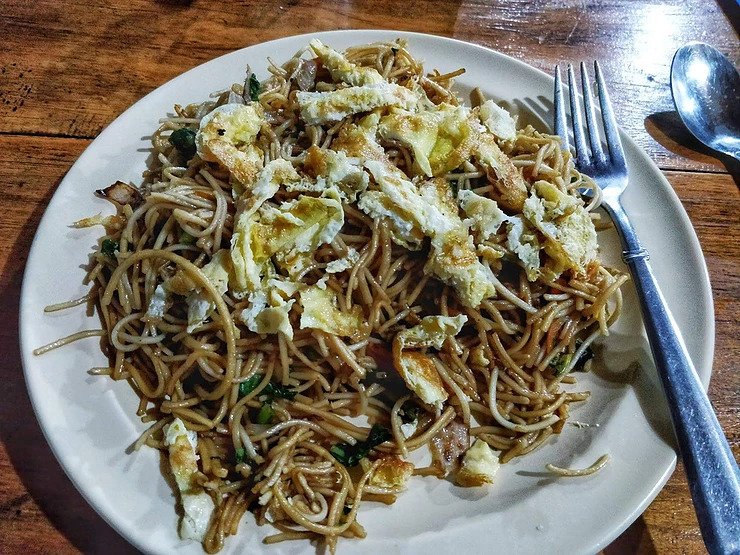
Then for dinner it’s all about the bhat… Dal Bhat! This is a Nepalese dish of rice, potatoes, nero (ferns) and lentil dal with a poppadum. Once you are served, they keep filling your plate until you are full. It’s basic but very good. You usually get the option to have a non-veg option (usually chicken), but we decided to stick to what the locals eat and so far – no illnesses! Plus, I may have lost a few pounds – bonus!
It was all easy food and tasty but does become tiresome. Luckily, while in Sikles village we stumbled on a shop which made tasty samosas and a bakery which made some tasty treats!
While there we also had a taste of the local homemade wine, which was pretty lethal! This was the homemade pot making the brew!
Accommodation during the trek
We left this up to the guide.
Within Yangjakot we stayed at a guesthouse, it was a separate room with three single beds, so the boys shared one. It was a basic room, as you would expect, and the bathroom was an external squat toilet. The room had a light and plug for charging our phones etc.
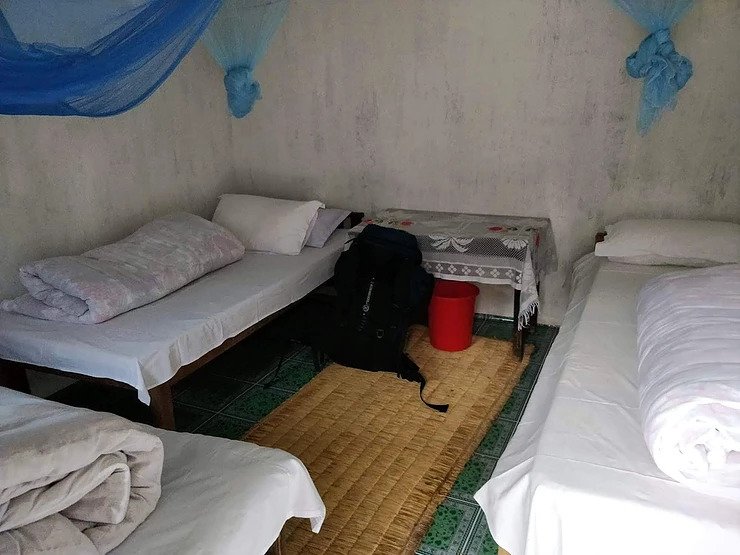
While at Tanting we stayed in a homestay. We had an attic room, again with three single beds. It had the same outdoor squat toilet, but the host kindly boiled some water for us, so we could have a hot shower! It was the boys’ favourite, and that hot shower after a sweaty trek felt so nice!
Our final stay was at Namaste Guesthouse in Sikles Village (this was pre-arranged by the headteacher in Sikles). It was the height of luxury with a double and two single beds and a couple of shared bathrooms with western toilet (amazing! ha-ha). Plus, a dining area where we ate our breakfast and dinner. We used the dining room as a meeting point and was nice to meet other travellers passing through the village.
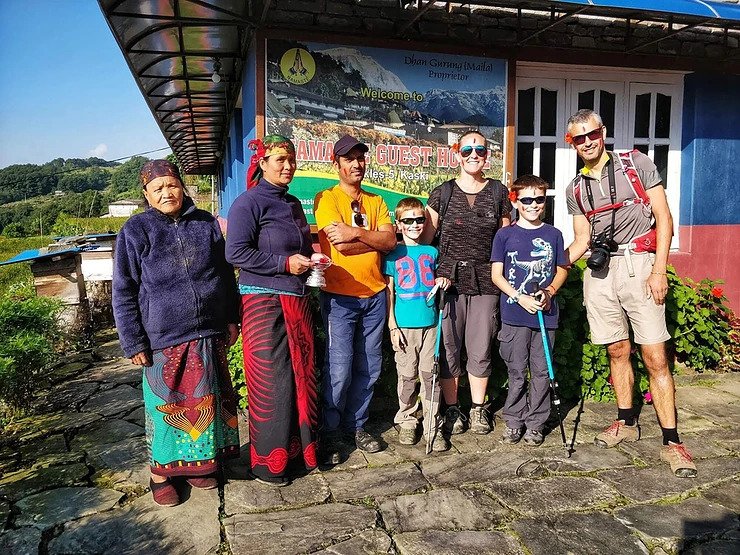
Our return trek of two days (one night). We returned through Tanting village and again met our host. She showed us her cooking skills in her Nepalese Kitchen, especially as we had picked Nero (ferns) on our return journey. This was a hands-on experience and great insight for the boys.
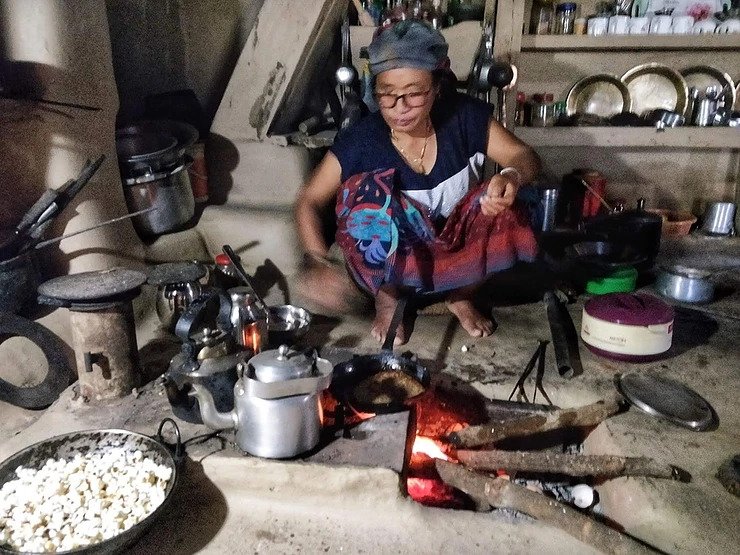
I have to admit, I was quite glad though when we returned to Pokhara to enjoy some home comforts in hotel Adam!
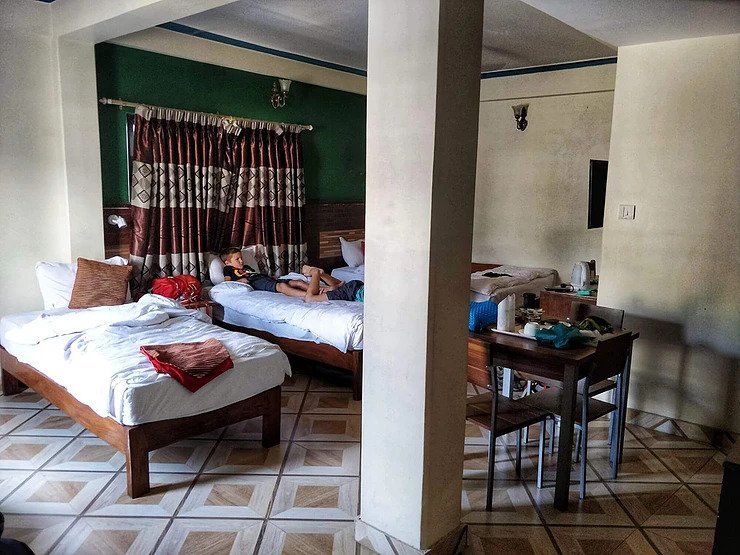
How much did it cost?
The accommodation cost us 400-600 Rupees (Rs). Namaste Guesthouse was the higher cost, but this was a more established guesthouse with western facilities and large dining area.
Food tended to cost around Rs150 for breakfast each which was usually omelette with Gurung bread or pancakes. Lunch tended to be Veg noodle soup, Rs150, or the samosas we found were Rs10 each and the bread rolls were Rs10 each from the bakery! Dinner was Rs300 for veg option which was usually Dal Bhat. However, we were treated to Veg Noodles two nights!
There’s usually a non-veg option (usually chicken), but we chose to eat vegetarian to avoid sickness. Best to eat what the locals eat!
Soft drinks were extra and usually costed Rs150 for a small bottle. Beer was available at Namaste Guesthouse and was Rs500 per large Tubourg bottle, needless to say we didn’t drink much. We didn’t buy any bottled water, as we had the filter system with us, so not sure of the water price.
Everything is paid in cash, so make sure you take enough money with you!
Conclusion
Nepal was one of the highlights of our trip so far. Having the opportunity to experience the Himalayas as a family and embark on this adventure was so amazing! We loved the challenge it brought to us and enjoyed meeting all the lovely people along our journey.
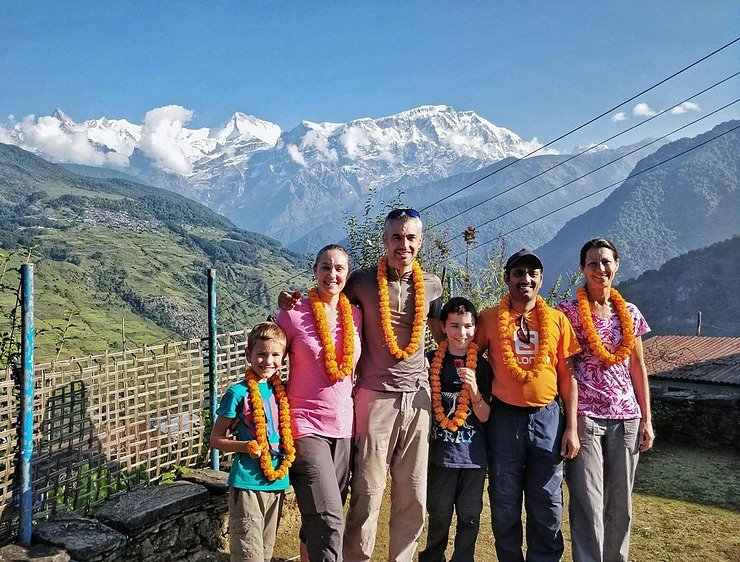
We have been greeted with open arms and warm hearts. A truly wonderful and hard working community.
We’ve seen so many amazing things while trekking in Nepal! And learnt so much. We’ve seen the children get up at 5am to collect water or grass cuttings before heading to school; We’ve seen elderly ladies, with no shoes on, carrying heavy loads through the steep steps; We’ve watched them spindle nettle thread and weaving to create clothing, mats and fencing; We’ve seen the men working together to build bridges and paths after landslides.

It’s very humbling seeing the difficult life they lead here and the raw materials and tools they use. Yet through all this, they have been so generous, welcoming and warm hearted towards us and the boys.
It’s been such a grateful experience and one I would recommend to other families!
To get more support from parents and family travelers, join our Parenting Support Group.
And follow us on Instagram to know about our crazy expat life!
Also check out:
- Travelling to Cuba with a 3-month-old baby.
- Cruising with Kids.
- Seven weeks travelling in China (+Hong Kong) with kids.
- Best Day Ever at an Elephant Sanctuary with Kids, Chiang Mai, Thailand.
- Things to Do with Kids in Las Vegas.
Welcome to check out our best product selection for parents and babies, including traveling gear and resources here.
This post may contain affiliate links that we may or may not receive a small commission, at no extra cost to you. This helps to fund our blog but we never advertise for anything we don’t personally love or recommend. There is never any pressure to buy anything, we just like sharing things that make our life easier and help you find them if it is something you are looking for. Please, see our full disclosure here.


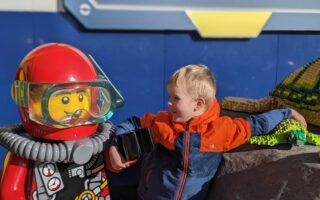
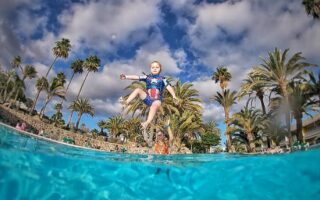
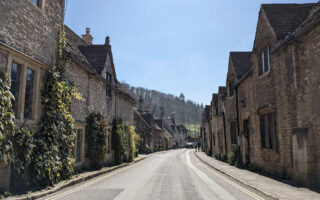
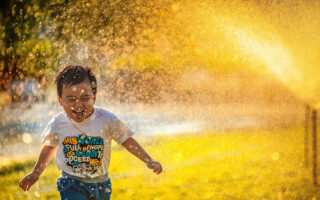
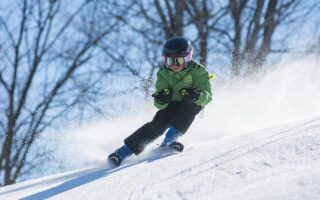


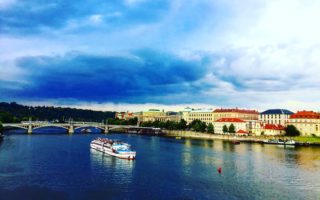
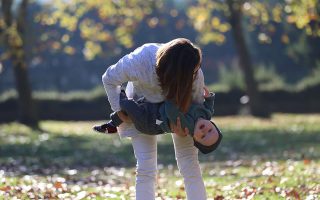
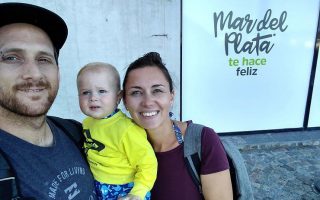
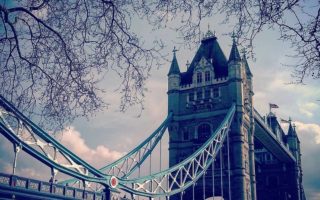
[…] Trekking in Nepal with kids. […]
[…] Trekking in Nepal with kids. […]
[…] Trekking in Nepal with kids. […]